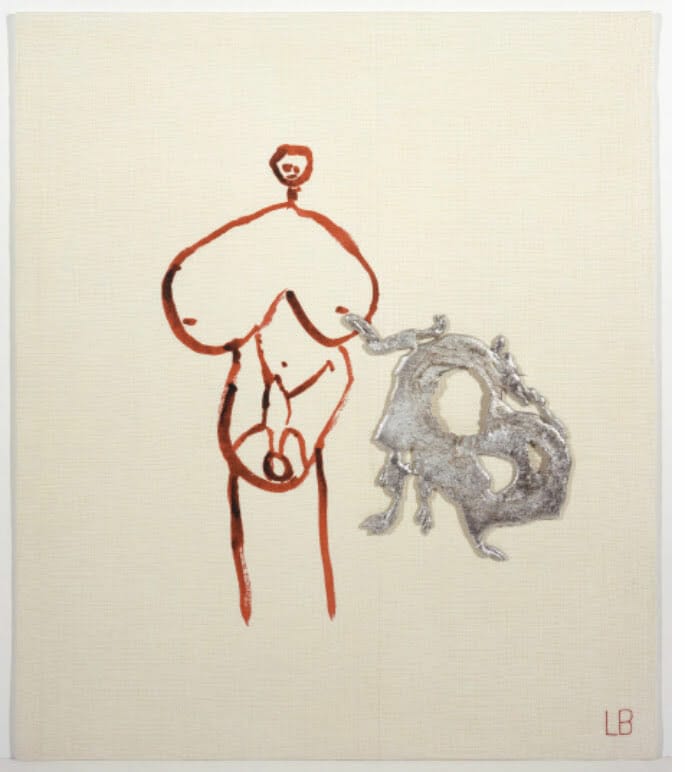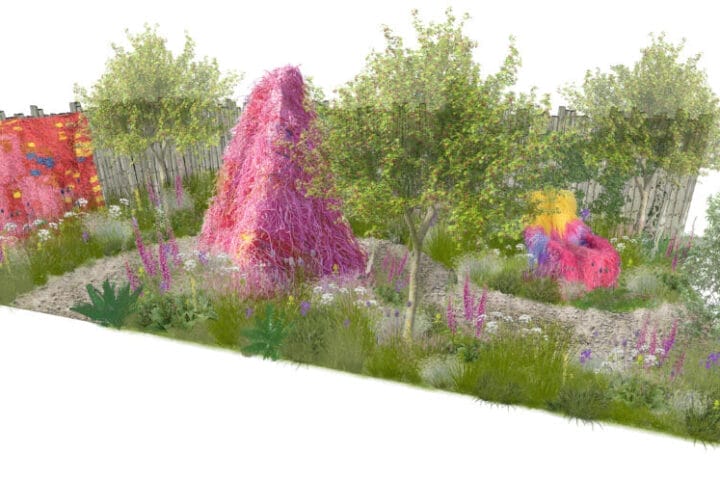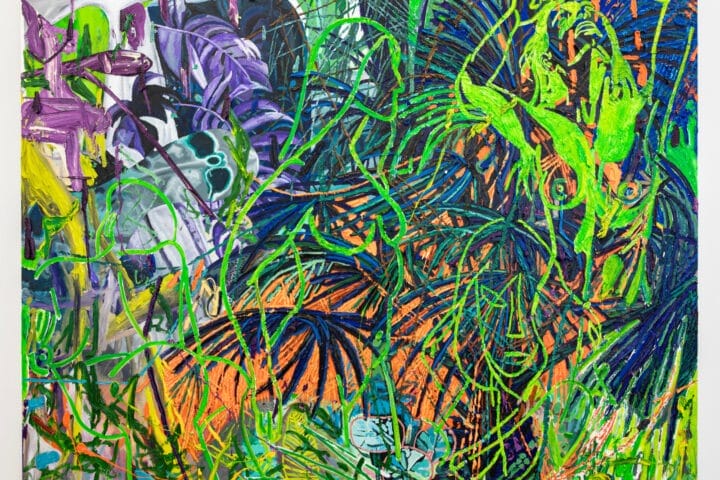New York…Hauser & Wirth is pleased to announce that the gallery will inaugurate its new dedicated space for Hauser & Wirth Editions with ‘Once there was a mother,’ a solo presentation of important and little-seen works by Louise Bourgeois (1911– 2010). Celebrated for large-scale sculpture and installation art, Bourgeois was also an inventive and prolific printmaker, especially during the last decade of her life. Centered around one of her most powerful themes––motherhood and maternity––the exhibition places Bourgeois’s printed works in relation to sculptures and drawings to highlight the essential role printmaking played within her multifaceted practice. It is the first show to focus on Bourgeois’s prints since the 2017-18 MoMA exhibition, ‘Louise Bourgeois: An Unfolding Portrait,’ curated by Deborah Wye, who is also the editor of the online catalogue raisonné of Bourgeois’s prints and books.
‘Once there was a mother’ opens to the public 8 September and will remain on view through 23 December 2023.
Hauser & Wirth’s new dedicated Editions space is located at 443 West 18th Street, a historic two-story former industrial building that has been transformed to complete the gallery’s West Chelsea expansion and complement its building at 542 West 22nd Street, which opened in 2020. In its new space, Hauser & Wirth Editions will explore the universe of contemporary and historical prints through curated exhibitions and public programs that showcase the multifaceted practices of the gallery’s international family of artists. Hauser & Wirth’s 18th Street location will also be home to new iterations of the popular Hauser & Wirth Publishers Bookstore and Roth New York Bar, both previously found in the gallery’s temporary location in the former historic Dia Center for the Arts building at 548 West 22nd Street. In addition to the Hauser & Wirth Editions space, the 18th Street location will house the Hauser & Wirth Learning hub for educational and community programs and projects; a small amphitheater for lectures, panels, performances and other special events; and extensive office and co-working spaces for the gallery’s New York team.

About the exhibition
‘Once there was a mother’ takes its title from Plate 9 of Bourgeois’s 1947 illustrated book ‘He Disappeared into Complete Silence,’ which pairs nine engravings with short texts she called parables. These stories and their accompanying images of isolated buildings convey a sense of loneliness, alienation and lack of communication. They also show Bourgeois’s fascination with the architecture of her adopted city, New York, where she lived and worked from 1938 until her death in 2010. In the parable which accompanies Plate 9, a son ultimately rejects his devoted mother despite her best efforts to protect him. Bourgeois wrote this in the mid-1940s, while raising three young sons.
Most of the printed works in the exhibition were made during the last decade of Bourgeois’s life, when images of maternity––pregnancy, childbirth and breastfeeding––came to the fore. Although already in her nineties at the time of their creation, the prints reveal Bourgeois to be exceptionally active and innovative, experimenting with a variety of techniques, adding hand-applied details, and printing on the old garments and household fabric she had saved throughout her long life. Like pages of a diary, this material evoked memories of people and events from Bourgeois’s past and was used extensively in her sculptural work as she increasingly identified with her mother, a tapestry weaver and restorer. Her longtime intaglio printer, Felix Harlan, established a printing process in which the various fabrics could take as rich an impression as paper. During this period, Bourgeois also began working closely with noted New York publisher and gallerist Carolina Nitsch. With the help of Raylene Marasco at Dyenamix, Nistch encouraged Bourgeois to edition digital prints that were made unique by the addition of hand- applied dyes and inks, as well as collage elements.
Printmaking afforded Bourgeois the possibility of taking an image or theme and experimenting with it across different variations and permutations. ‘The Fragile’ (2007) is an edition of seven individual sets of thirty-six prints on fabric, each with distinct elements and hand-applied archival dyes. The work is an expression of Bourgeois’s feelings of physical and psychological frailty in her old age, and her ensuing identification with the infant child.

The following year, Bourgeois made another edition of nine unique prints on fabric titled ‘The Good Mother’ (2008). Each print in the edition depicts a pregnant woman outlined in red with silver milk dribbling and puddling in various shapes from her left breast. According to Jerry Gorovoy, Bourgeois’s longtime assistant and president of her foundation, The Easton Foundation, the metallic elements are leftover drips of aluminum found on the foundry floor after the casting of one of Bourgeois’s sculptures.
One of the exhibition’s only completely unique printed works is ‘Self Portrait’ (2009). Composed on an old bedspread embroidered with the initials ‘L.B.,’ this work was made a year before the artist’s death and depicts a 24-hour clock with hands positioned at the hours 19 and 11––which together form the year of Bourgeois’s birth. Twenty-four individual drypoint prints are collaged and stitched at every hour, with each print illustrating an important event from the artist’s life. The image at hour 24 resembles ‘Maman,’ the monumental spider Bourgeois saw as a symbol for her mother and as analog for her own artistic practice.
About Louise Bourgeois
Born in France in 1911 and working in America from 1938 until her death in 2010, Louise Bourgeois is recognized as one of the most important and influential artists of the past Century. For over seven decades, Bourgeois’s creative process was fueled by an introspective reality, often rooted in cathartic re-visitations of early childhood trauma and frank examinations of female sexuality. Articulated by recurrent motifs (including body parts, houses and spiders), personal symbolism and psychological release, the conceptual and stylistic complexity of Bourgeois’s oeuvre––employing a variety of genres, media and materials––plays upon the powers of association, memory, fantasy and fear.

About Hauser & Wirth 18th Street
Originally built in 1920 for New York City’s Consolidated Gas Company, Hauser & Wirth’s West 18th Street location building has been restored and adapted by David Bench, Principal of inca architects pllc. In addition to housing Hauser & Wirth’s first dedicated space for Hauser & Wirth Editions, the site is home to the U.S. headquarters of Hauser & Wirth Publishers and its award-winning magazine, Ursula.
Comprising roughly 16,800 square feet across two levels, the new location completes Hauser & Wirth’s West Chelsea ‘campus.’ It includes expansive staff offices and co-working spaces; a 72-seat amphitheater for public programs and events; a dedicated space for Hauser & Wirth Learning initiatives; and the latest iteration of the Roth New York Bar, a functional work of installation art created by artists Björn Roth and Oddur Roth. Previous iterations of the Roth bar were located at the gallery’s temporary locations at 511 West 18th Street and, subsequently, 548 West 22nd Street.
A series of conversations, screenings, performances, workshops and Learning events inspired and informed by the work and ideas of Hauser & Wirth’s artists will be scheduled over the coming weeks. Public information about upcoming programs and events can be found at hauserwirth.com/events.
About Hauser & Wirth Publishers
In keeping with Hauser & Wirth’s artist-centric vision, the independent imprint Hauser & Wirth Publishers works to bring readers into the universe of artists and behind the scenes of their practices. Hauser & Wirth Publishers is thus a platform for celebrating the practice and voice of the artist through a range of activities: From publishing artists’ writings and exceptional exhibition-related books, to commissioning new scholarship to pursuing the highest levels of craft in design and bookmaking, it creates vital, lasting records of artists’ work and ideas, forging critical gateways to the cultural discourse these inspire.
Through its Oral History initiative, Hauser & Wirth Publishers is building an enduring record of artists’ voices for the enrichment of future generations. Additionally, it publishes Ursula, an award-winning magazine featuring essays, profiles, films, interviews, original portfolios and photography by some of the most thought-provoking writers and artists in the world.
Across its dedicated bookstores in the U.S. and Europe, Hauser & Wirth Publishers complements and amplifies the artist’s voice by hosting a robust slate of special events, including talks, panels, readings and learning programs that engage the full range of audiences and communities.
Publishing has been a cornerstone of Hauser & Wirth’s activity since that gallery’s founding in 1992. Its publishing activities steadily flourished through partnerships with such peer imprints such as Hatje Cantz, JRP|Ringier, Snoeck, Steidl, Thames & Hudson and Yale University Press, before eventually operating independently under its own imprint, opening headquarters in New York and Zurich.
About Hauser & Wirth Learning
Hauser & Wirth’s longstanding Learning programs foster dialogue, creativity and discovery among the widest possible range of audiences through activities and events catalyzed by the work and ideas of the gallery’s artists. Operating within the physical spaces of Hauser & Wirth locations worldwide, the Learning team delivers a collaborative program––often organized in partnership with local non-profit organizations and community groups––aimed at expanding appreciation for art as a vehicle for personal and collective exchange and education.
Hauser & Wirth Learning also includes initiatives to increase access to career opportunities within the art world, as well as ongoing collaborations with schools and universities.
Among current Hauser & Wirth Learning partners in New York City are Columbia University, Hunter College, Free Arts, Wide Rainbow, Culture For One and Artistic Noise.
Hauser & Wirth
443 W 18th St, New York, NY 10011, United States










